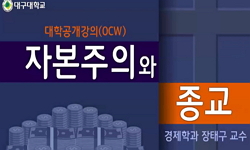This paper aims to examine Dickens`s Little Dorrit terms of its relation with the modernity problem, focusing on the Blake`s distinction of `selfhood` (ie, the false self) from `identity` (ie, the genuine self). The individual as selfhood has the char...
http://chineseinput.net/에서 pinyin(병음)방식으로 중국어를 변환할 수 있습니다.
변환된 중국어를 복사하여 사용하시면 됩니다.
- 中文 을 입력하시려면 zhongwen을 입력하시고 space를누르시면됩니다.
- 北京 을 입력하시려면 beijing을 입력하시고 space를 누르시면 됩니다.
https://www.riss.kr/link?id=A87006724
- 저자
- 발행기관
- 학술지명
- 권호사항
-
발행연도
2002
-
작성언어
-
-
주제어
디킨즈 ; Dickens ; 『리틀 도리트』 ; Little Dorrut ; 근대성 ; modernity ; 자본주의 ; capitalism ; 감금된 삶(imprisoned Life)과 해방된 삶(Liberated Life) ; 닫힌 자아 ; selfhood ; 열린 자아 ; identity ; 통제사회 ; society of control ; 제국 ; empire
-
KDC
800
-
등재정보
KCI등재
-
자료형태
학술저널
-
수록면
67-86(20쪽)
-
KCI 피인용횟수
2
- 제공처
-
0
상세조회 -
0
다운로드
부가정보
다국어 초록 (Multilingual Abstract)
This paper aims to examine Dickens`s Little Dorrit terms of its relation with the modernity problem, focusing on the Blake`s distinction of `selfhood` (ie, the false self) from `identity` (ie, the genuine self). The individual as selfhood has the characteristics of egotistically following possessive impulses and embodying normalized selves; on the other hand, the individual as a creative identity makes possible a liberation from the narrow modern ego and the exploitative economy. The former, because of its weak individuality, Just follows society`s current opinion, even when senous disasters are looming ahead. But the identity empowered with the strong individuality might see the actual state of affairs differently and oppose the general collapse. Among the characters in Little Dorrit, Christopher Casby, Mrs. Clennam, William Dorrit, and Henry Gowan represent `selfhood,` and Amy Dorrit and Daniel Doyce represent `identity.` Such qualities as innocence and disinterestedness, creativity and individuality of the latter group contribute to the collaborative creation of the genuine `reality.` These are qualities generating and sustaining the humane space by liberated lives, while the former group`s characteristics can be summarized as ones enclosed in the modern capitalist economy. Now we are witnessing the coming of `society of control` or `empire` accompanied by the spread of standardization on an unparalleled scale, the cause and effect of which might be attributed to the general spread of normalized selves. If we tread in their footsteps, there is no way to conceive alternative ways of life, because, as said before, they have no ability to think differently. The significance of Dickens`s notion of the imprisoned life and liberated life lies in this context.
동일학술지(권/호) 다른 논문
-
잘려나간 굴뚝과 남성 작가의 좌절: 멜빌의 단편소설 연구
- 한국근대영미소설학회
- 박연옥 ( Yun Ok Park )
- 2002
- KCI등재
-
도시적 감수성의 문화적 형상화: 『막대한 유산』을 중심으로
- 한국근대영미소설학회
- 성은애 ( Eun Ai Sung )
- 2002
- KCI등재
-
- 한국근대영미소설학회
- 이경란 ( Kyung Ran Lee )
- 2002
- KCI등재
-
선정소설과 여성의 육체: 메리 엘리자베스 브래던의 『오들리 부인의 비밀』
- 한국근대영미소설학회
- 장정희 ( Jung Hee Chang )
- 2002
- KCI등재
분석정보
인용정보 인용지수 설명보기
학술지 이력
| 연월일 | 이력구분 | 이력상세 | 등재구분 |
|---|---|---|---|
| 2026 | 평가예정 | 재인증평가 신청대상 (재인증) | |
| 2020-01-01 | 평가 | 등재학술지 유지 (재인증) |  |
| 2017-01-01 | 평가 | 등재학술지 유지 (계속평가) |  |
| 2013-01-01 | 평가 | 등재학술지 유지 (등재유지) |  |
| 2010-01-01 | 평가 | 등재학술지 유지 (등재유지) |  |
| 2008-06-04 | 학회명변경 | 영문명 : The Korean Society Of British And American Fiction To 1900 -> The Korean Society of British and American Fiction |  |
| 2008-05-29 | 학술지명변경 | 외국어명 : The British and American Novel -> British and American Fiction |  |
| 2008-01-01 | 평가 | 등재학술지 유지 (등재유지) |  |
| 2006-01-24 | 학술지명변경 | 외국어명 : British and American Fiction to 1900 -> The British and American Novel |  |
| 2005-01-01 | 평가 | 등재학술지 선정 (등재후보2차) |  |
| 2004-01-01 | 평가 | 등재후보 1차 PASS (등재후보1차) |  |
| 2003-01-01 | 평가 | 등재후보학술지 유지 (등재후보2차) |  |
| 2002-01-01 | 평가 | 등재후보 1차 PASS (등재후보1차) |  |
| 2000-07-01 | 평가 | 등재후보학술지 선정 (신규평가) |  |
학술지 인용정보
| 기준연도 | WOS-KCI 통합IF(2년) | KCIF(2년) | KCIF(3년) |
|---|---|---|---|
| 2016 | 0.24 | 0.24 | 0.21 |
| KCIF(4년) | KCIF(5년) | 중심성지수(3년) | 즉시성지수 |
| 0.2 | 0.17 | 0.758 | 0.17 |




 RISS
RISS KISS
KISS






